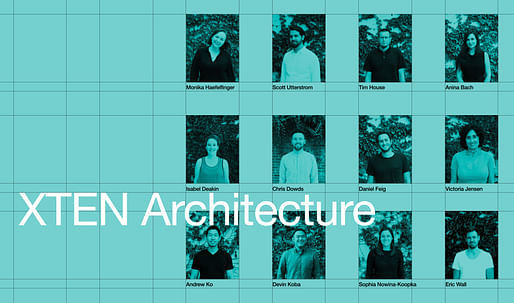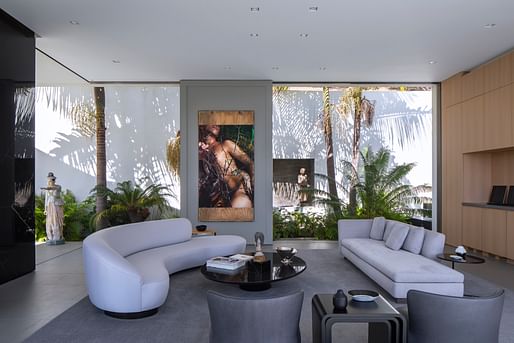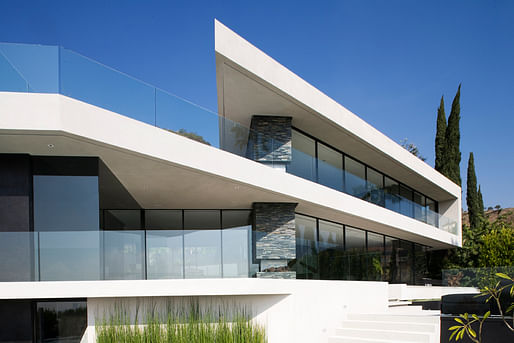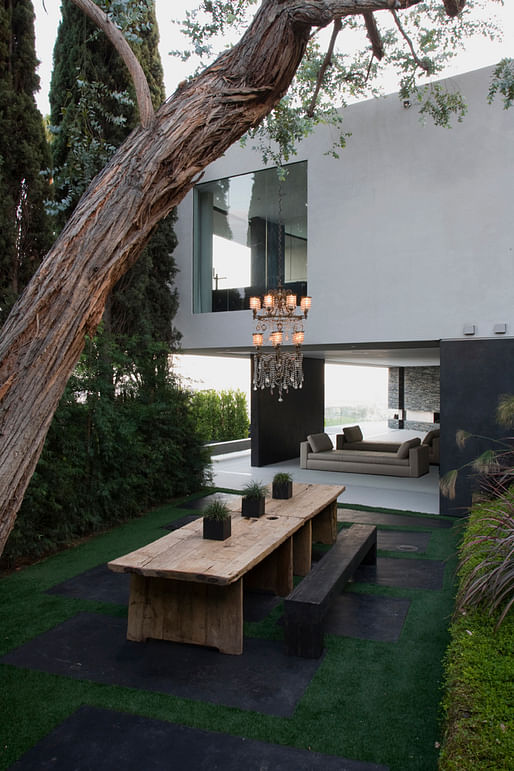
Following last week’s visit to multidisciplinary practice SITU, we are moving our Meet Your Next Employer series to Los Angeles this week, where we find precision aestheticians XTEN Architecture.
Founded in 2000, the firm has grown to operate studios in Los Angeles, CA and Sissach, Switzerland. As studio director Monika Haefelfinger told us in our studio snapshot in 2019, the name ‘XTEN’ was inspired by the film Powers of Ten by Ray and Charles Eames.
Reflecting on their design ethos, the firm told us in 2019 that their thesis is “gather, simmer, and reduce.” Organizational grids are a key component to the firm’s projects, resulting in highly rational plans. “Our goal is to leverage control over the quality of concept and craftsmanship in order to create a body of work that lends dignity to the architectural experience,” Haefelfinger told us.
The firm’s Los Angeles studio is currently hiring for several positions over on Archinect Jobs. For candidates interested in applying for a position, or anybody interested in learning more about the firm’s ethos, we have rounded up five residential projects by XTEN that reflect their attention to detail and craft.

Overlooking Hermosa Beach, CA, STRANDHOUSE is defined by a clean rectangular profile framing a glass façade. The house is divided into three levels, each with a unique relationship to the Strand. The ground floor is conceived as an extension of the beach, while the middle floor contains all primary living spaces from a position of privacy. The top floor meanwhile focuses upwards, framing views of the horizon and sky.

“As the white interiors showcase the client’s art collection, the west facing glass façade acts as a blank canvas, reflecting various shades of color throughout the day,” Haefelfinger describes. Since its completion, the scheme has been awarded a 2021 AIALA Design Award and a 2020 AIALA Residential Award.

For the aMa House in Palisades, CA, XTEN prioritized sustainable and biophilic design principles to create what they call a “dynamic tapestry of seamless layered environments that are connected, complementary, and integrated.” Among the scheme’s defining architectural elements are a curved masonry wall rising almost 30 feet along the length of the property, and an expansive double-height living space with glass doors on both sides to maximize natural light.
“Woven throughout the property, there are truly special moments where the architectural and design elements just came together so organically and blend so perfectly with the landscape.” Haefelfinger notes. “Like the beautifully planted hillside with a lovely staircase that leads to the guest house beneath the pool. Once inside the house, sliding glass walls open in every direction creating a sense of transparency and lightness—of being one with nature.”

Located on Los Angeles, Sapphire was created as an addition to a residential property, designed to display a private art collection while also providing interior spaces with views of the surrounding hills. Among XTEN’s objectives was to create a scheme with “sculptural qualities that would relate to both the existing 1960s modern house and also the art pieces, many of which have geometric and architectural characteristics.”
The resulting building is lifted off the ground, with double cantilevers at each end of the trapezoidal form made possible by a structural system of lightweight steel braced frames. The interior’s material palette is completed by dark quartz pebble flooring, white steel stairs, and perforated steel railings.
Embedded in a sharply sloping site on the Hollywood Hills, XTEN’s objective for Openhouse was to create a scheme “both integrated into nature and open to the city beyond.” To address the steep topography, extensive grading and terraced retaining walls were constructed to extend the first floor living area into the hillside and to create garden terraces on each level.

The scheme’s architectural form is defined by deep overhangs, which offer solar protection for the envelope’s glazed facades. Across all three levels, the front, side, and rear elevations all slide open to blur boundaries between the interior spaces and outdoor gardens and terraces, while also allowing for prevailing breezes to passively ventilate and cool the house.

XTEN describe Nakahouse as an “abstract remodel of a 1960s hillside house” located just below the Hollywood sign. While the foundations and building footprint of the original home were retained, the interior was extensively reconfigured to open up to hillside views, while a cantilevered terrace was added to link the kitchen/dining area with the living room. To the bedroom wing, terraces were added to extend interior spaces through full-height glass sliding panels that disappear into adjacent walls when opened.
In contrast to the light, fluid interiors which follow a principle of “uncontained” space, the exterior walls are finished in a black, monolithic Meoded Venetian plaster system. XTEN describe the black exteriors as a “net holding the home in place, while still allowing it to move in interesting directions.”
Meet Your Next Employer is one of a number of ongoing weekly series showcasing the opportunities available on our industry-leading job board. Our Job Highlights series looks at intriguing and topical employment opportunities currently available on Archinect Jobs, while our weekly roundups curate job opportunities by location, career level, and job description.
No Comments
Block this user
Are you sure you want to block this user and hide all related comments throughout the site?
Archinect
This is your first comment on Archinect. Your comment will be visible once approved.